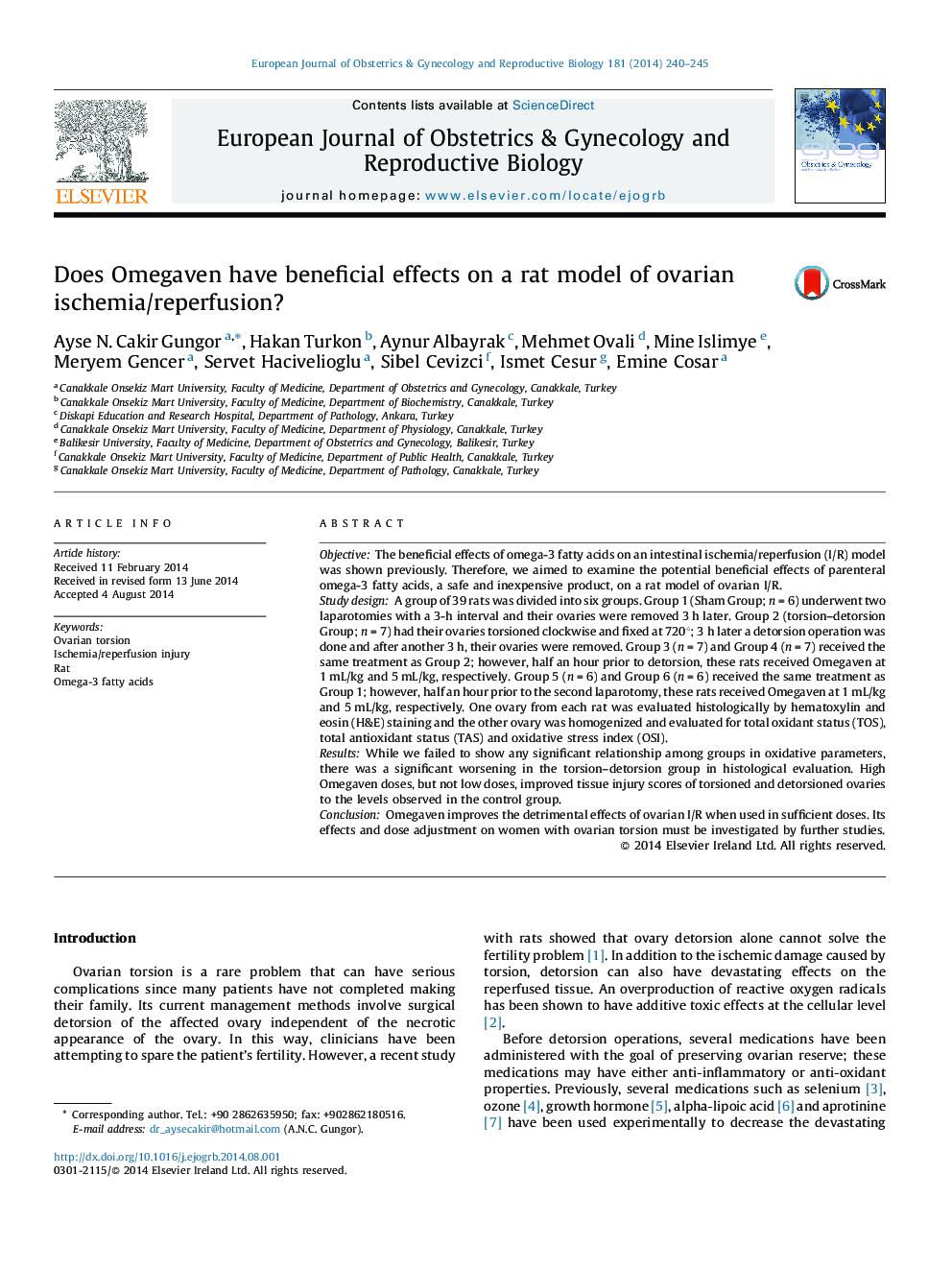| کد مقاله | کد نشریه | سال انتشار | مقاله انگلیسی | نسخه تمام متن |
|---|---|---|---|---|
| 6173225 | 1599800 | 2014 | 6 صفحه PDF | دانلود رایگان |

ObjectiveThe beneficial effects of omega-3 fatty acids on an intestinal ischemia/reperfusion (I/R) model was shown previously. Therefore, we aimed to examine the potential beneficial effects of parenteral omega-3 fatty acids, a safe and inexpensive product, on a rat model of ovarian I/R.Study designA group of 39 rats was divided into six groups. Group 1 (Sham Group; n = 6) underwent two laparotomies with a 3-h interval and their ovaries were removed 3 h later. Group 2 (torsion-detorsion Group; n = 7) had their ovaries torsioned clockwise and fixed at 720°; 3 h later a detorsion operation was done and after another 3 h, their ovaries were removed. Group 3 (n = 7) and Group 4 (n = 7) received the same treatment as Group 2; however, half an hour prior to detorsion, these rats received Omegaven at 1 mL/kg and 5 mL/kg, respectively. Group 5 (n = 6) and Group 6 (n = 6) received the same treatment as Group 1; however, half an hour prior to the second laparotomy, these rats received Omegaven at 1 mL/kg and 5 mL/kg, respectively. One ovary from each rat was evaluated histologically by hematoxylin and eosin (H&E) staining and the other ovary was homogenized and evaluated for total oxidant status (TOS), total antioxidant status (TAS) and oxidative stress index (OSI).ResultsWhile we failed to show any significant relationship among groups in oxidative parameters, there was a significant worsening in the torsion-detorsion group in histological evaluation. High Omegaven doses, but not low doses, improved tissue injury scores of torsioned and detorsioned ovaries to the levels observed in the control group.ConclusionOmegaven improves the detrimental effects of ovarian I/R when used in sufficient doses. Its effects and dose adjustment on women with ovarian torsion must be investigated by further studies.
Journal: European Journal of Obstetrics & Gynecology and Reproductive Biology - Volume 181, October 2014, Pages 240-245